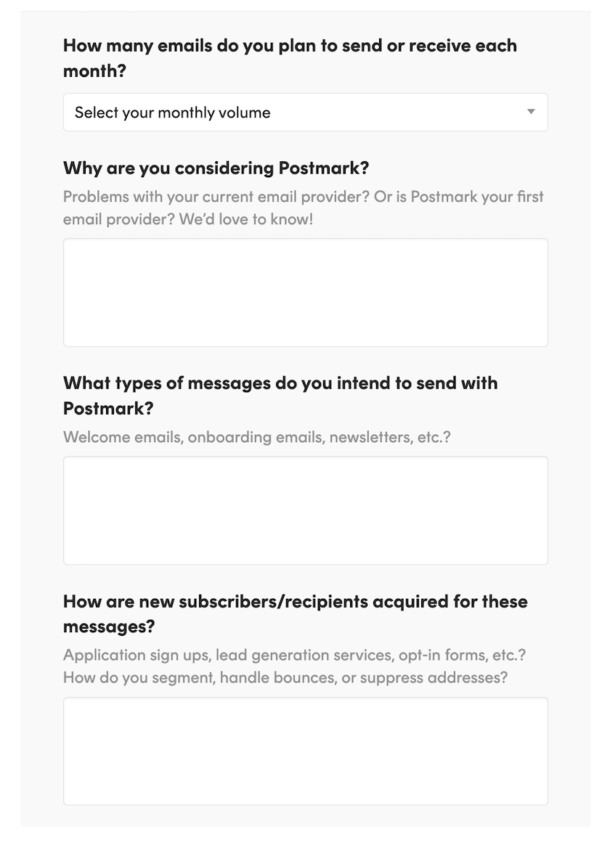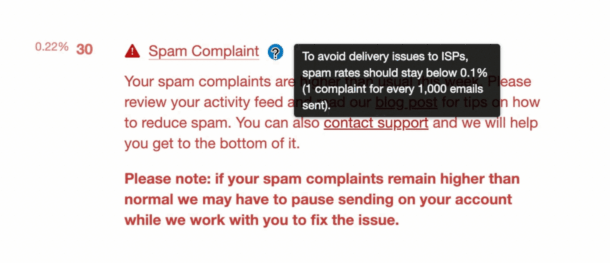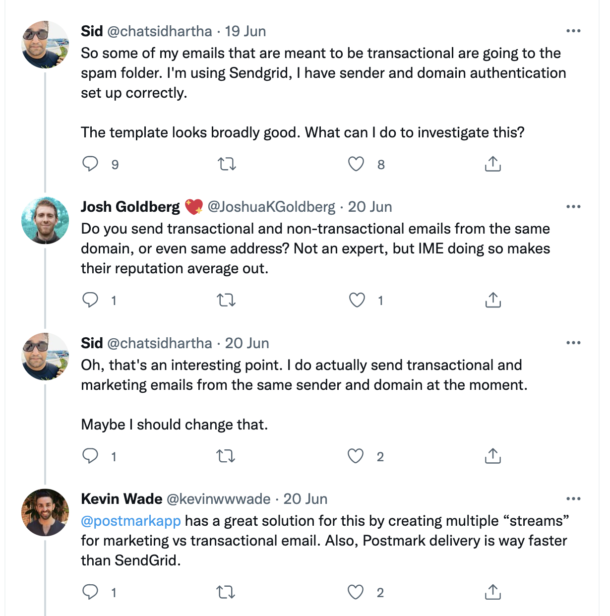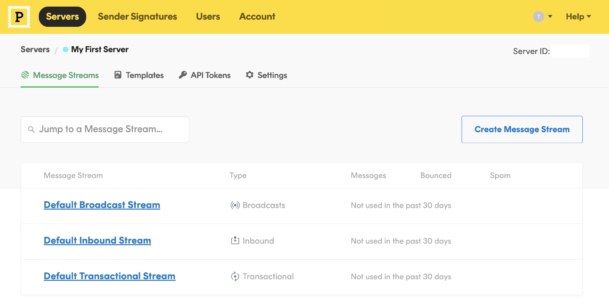Why most email providers have deliverability issues (and how we’re different)
There are three questions you can ask any email service provider to establish whether you’re going to have delivery issues: Do they take good care of their shared IPs? Do they use separate IPs for transactional and marketing email? Will their team proactively help you?
With most providers, the answers will be no, no, and no—which means you will, in fact, run into a delivery issue sooner or later.
1. A lot of providers don’t take good care of their shared IPs (and try to upsell you dedicated ones) #
Most providers have reputation-based IP pools for different customers; you can imagine them as tiers going from ‘great’ to ‘average’ all the way down to ‘really bad’.
Providers often start a customer on their best IP pool but downrank them as soon as something happens (for example, a spam event). This makes deliverability rates go down; and as the customer’s deliverability worsens, their ability to improve and ‘earn’ a better IP pool in the system is taken away, so they get downranked further. They cycle continues until the customer is thrown into the lowest-quality tier, in an IP pool full of bad actors. And if at any point the customer complains (rightly so), the provider will claim that the only way to get emails back into the inbox is to pay a premium for a dedicated IP.
This is one of our biggest email pet peeves: email delivery services that insist dedicated IPs are the only way to achieve great deliverability. Putting senders with questionable sending reputations in a bad IP pool means they can still be charged for the services; and if a legit sender ends up in there, the provider can talk them into a dedicated IP upgrade. Double 💰💰, but also: yikes.
At Postmark, we take a different approach. Rather than sorting bad senders into poor IP pools, we don’t allow them to use Postmark at all. Period.
We have multiple transactional and broadcast IP pools, and they all have the same high reputation; customers are assigned to them at random on signup. There are no tiers, just different IPs that we manage and monitor extremely well to make sure the pool retains its high reputation and, therefore, high deliverability.
A big part of our delivery efforts is encouraging good email behavior on our platform and preventing bad emailers from messing things up for everyone. We have two processes in place to make that happen:
1. We manually approve every account. We make all potential customers fill in the form below and then manually review each submission. It is exactly as time-consuming as it sounds, but it is a crucial step of our process: if we determine that someone’s not the type of customer who’s going to take good care of our IPs, we don’t allow them on the platform.

2. We monitor spam complaint rates and bounce rates closely: for instance, our customers’ spam complaint rate must be lower than 1 in 1,000 emails (0.1%). If they exceed this limit, their account might get paused while we work with them to figure out what’s going on.
Unlike other providers, we also share detected delivery issues with customers, so they always have the chance to work on them before they cause bigger problems.

We like to think of our shared IP pool as a place where you are always surrounded by good neighbors. If you were on a dedicated IP and made some kind of sending error, your IP reputation would be directly affected and you’d be solely responsible to build it back up; but if you were on a shared IP surrounded by good neighbors, their good behavior would keep your IP reputation stable while you recover.
Editor’s note: friends, we have a lot of opinions on the topic, and here are three more resources if you are curious: a guide to the difference between shared vs dedicated IPs, a Twitter thread about our dedicated IP pet peeve, and an opinion piece about the false promise of dedicated IPs.
2. Most providers send transactional and marketing email over the same IPs (we don’t) #
Inbox providers don’t like surprises and value consistency above anything else.
If you normally send individual transactional emails from a certain domain and IP pool, and then suddenly send two million newsletters from the same place, you’re going to run into issues. For example, your urgent transactional messages (e.g. a password reset email) might get stuck behind a newsletter and fail to reach a customer on time, which will reflect poorly on your service.
But you might also suffer even bigger consequences: the inbox provider might respond to your mixed sending volumes by putting a bunch of emails on hold or in the spam folder, which is where your troubles really begin.

At Postmark, we spent our first ten years in business optimizing deliverability and time-to-inbox for transactional emails only: customers wouldn’t be able to send any other type through our infrastructure. And then, after a decade recommending that customers separate transactional traffic from other types of email by using different sending IPs and ’From’ domains, we followed our own advice. In 2020 we built a separate-but-parallel sending infrastructure we call “Message Streams” to ensure customers can send both transactional and broadcast emails in Postmark, and that the two types would never mix (IP ranges included).

We are the only provider who’s ever built this kind of infrastructure, which makes it really unique. Also unique? Our global delivery rates: 99% for both types of email.
If you are curious, we’d love for you to take a deeper look below:
3. Most providers don’t proactively help you #
It should be a provider’s responsibility to monitor how their IPs are used, weed out spammers who interfere with the reputation of legit senders, and notice deliverability issues that need fixing; but most providers put the responsibility for delivery back on the customer, and wait for them to get in touch after they experience issues like getting on a blocklist.
At Postmark, we believe it’s a provider’s responsibility to stay on top of things. You are paying us to tell you if something is wrong, not the other way around; and when something happens, we will work together to help you through it.
Our not-so-secret unique advantage compared to other providers is that we built an extremely talented team with strong personal networks in the world of deliverability. Take our Deliverability Lead and Postmark’s Postmaster, Anna, who has witnessed some bizarre and extreme email deliverability edge cases: it’s Anna’s job to maintain relationships with receivers and block-list providers, in many cases getting to know their postmasters as trusted friends. That means she can investigate and report any issues directly, receiving better context and faster resolutions.

Final thoughts #
We started the piece by listing questions that can help establish whether you’re going to have delivery issues with your provider. Do they take good care of their shared IPs? Do they use separate IPs for transactional and marketing email? Will their team proactively help you?
With most providers, you’ll get in trouble because their answers are no, no, and no. With Postmark you’re in safe hands, because our answers are what they should be: yes, yes, and yes.
And now that you know, why don’t you take Postmark for a spin? 😉







